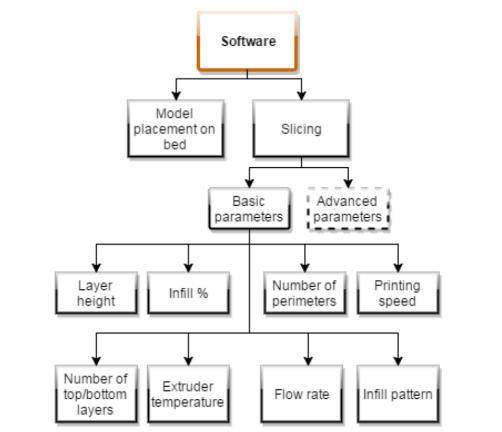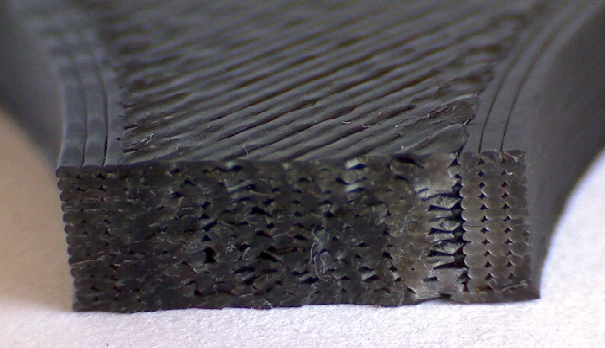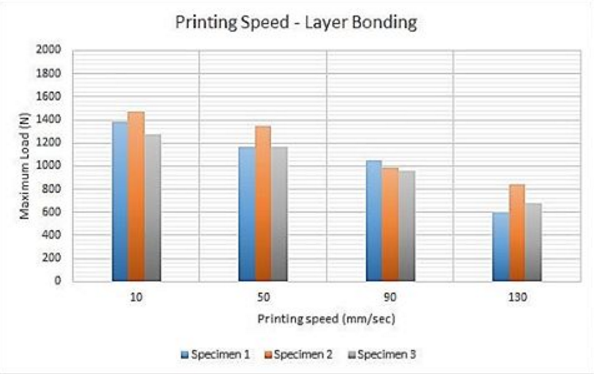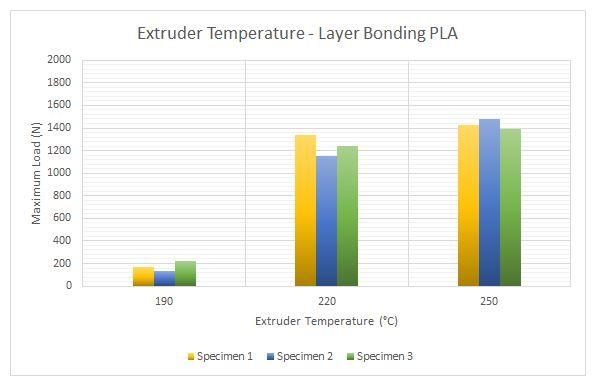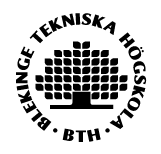 Today as we see 3D printing becoming a more mainstream tool despite many differing opinions on what its future might hold, we also see researchers and scientists spending more time testing the technology. From examining everything from toxicity to issues with porosity, teams in labs around the country—while not only immersed in the activity of using 3D printers—are becoming more and more curious about the actual processes and materials and how they can be further refined.
Today as we see 3D printing becoming a more mainstream tool despite many differing opinions on what its future might hold, we also see researchers and scientists spending more time testing the technology. From examining everything from toxicity to issues with porosity, teams in labs around the country—while not only immersed in the activity of using 3D printers—are becoming more and more curious about the actual processes and materials and how they can be further refined.
Obviously one topic that we are seeing discussed much more lately is that of strength and durability. While manufacturers are quite fond of releasing studies regarding the strength of their materials, and we’ve even seen a 3D printed machine that you can make to test parts’ strength, this is an important subject for researchers to study also as they come to the table neutrally, and can help us to learn about what processes and materials will work best for our own projects. Recently, Frans Johansson, then a grad student at the Blekinge Institute of Technology in Sweden, took on the subject of durability testing for his thesis. He posted some of the information from his paper in one of our 3DPrintBoard forums recently and managed to spark off a very good conversation regarding how layer height affects the strength of your 3D print. Users had varying opinions, as well as numerous helpful tips regarding different materials and projects.
In ‘Optimizing Fused Filament Fabrication 3D printing for durability,’ however, we see that Johansson is exploring a much more comprehensive subject rather than just covering layer height—although he does focus on it quite intensively. Here (in collaboration with Creative Tools AB) he discusses both the hardware and software involved in fused filament fabrication (FFF), as well as discussing the typical thermoplastics used, along with their mechanical properties. Printing procedures are outlined as he proceeds to test for durability through exploring tensile properties, layer bonding, and using visual inspection. The goal, according to Johansson, is to learn about 3D printing hardware and software, and to offer valuable data that is helpful to all 3D printing enthusiasts, from the novice to the pro.
The thesis question is: How do you optimize FFF 3D printing settings and material choices for durability?
Explaining first that there is very little documentation from manufacturers regarding 3D printing materials in Sweden, the author takes his readers through a very concise and helpful summary of what 3D printing is overall and how all the parts and software come together to produce a successful 3D printed object.
Moving into the study of materials, Johansson explains that in FFF 3D printing, the user is dealing with:
- Native polymers or biopolymers (PLA)
- Synthetic polymers (ABS and PET)
- Semi-synthetic polymers
- Chemically modified biopolymers (vulcanized rubber)
The morphology and weight of materials is discussed briefly, and then Johansson begins to explore the mechanical properties of materials.
“Compared to metals or ceramics the polymer’s material behavior under load significantly depends on temperature and time,” states Johansson. “Mechanical calculations for plastics are often much more complicated compared to metals. When making structural components in plastic materials they are often designed to withstand maximum 25 % of their tensile strength under continuous 21 conditions. This is a good guideline that will compensate for effects like creep.”
All of the following can have an effect on mechanical properties:
- Shrinkage
- Residual stresses
- Crystallinity
- Creep
An understanding of both materials and settings is required in order to continue to produce successful 3D prints, and Johansson offers a comprehensive explanation of nearly everything you’ll need to know in terms of the basics before moving on to tensile testing.
“With over a hundred settings and parameters to tweak the FFF 3D printing process there are a lot of opportunities, opportunities to optimize for durability,” says Johansson.
He then goes on to examine and test some of the most popular 3D printing materials, along with some nylons—a favorite among engineers. Johansson used equipment for tensile testing at Blekinge Institute of Technology, and all of the 3D printed specimens were made at Creative Tools AB Halmstad on Flashforge Dreamer and MakerBot Replicator 2X 3D printers.
“Stress-strain behavior of the materials shows that ABS is slightly softer than PLA and PET are slightly softer than ABS [with] PLA being the hardest material in the test,” explains Johansson.
“The soft material TPU 95 testing procedure failed and no data could be extracted.”
In testing materials ranging from ‘rigid to flexible,’ and including rubbery textures, the author discovered the greatest failures in durability were to be blamed on layer bonding failure, so indeed he did spend more time studying that issue. Five basic settings were used in evaluation performance in terms of layer bonding, as Johansson studied the load capacity of a 3D printed part made from PLA. He measured its capacity as it was loaded transversally relative to the layers. According to the author, four of the settings were shown to impact the capacity by 50 percent or more individually.
“The major factors available to improve layer bonding seems to be extruder temperature, layer height and printing speed,” states Johansson.
In his research, Johansson also points out that the factors he discusses may not apply to every hardware, software or geometry in question.
“The tested printing settings effect on layer bonding may not stack,” states Johansson. “However it may be very useful to have several options when optimizing your 3D printing for durability due to other important factors considering visual quality, weight and printing time.”
In conclusion, Johansson sees the data he presents as not only offering a great overview for anyone involved with 3D printing, but users may learn to ‘tweak basic settings’ in learning to increase layer bonding performance. The measurement data from the report should also serve as a helpful guide as designers and engineers are trying to choose the best material for a project in terms of durability.
Johansson’s thesis was written as part of his five-year program for a Master of Science degree in Mechanical Engineering with an emphasis on Applied Mechanics at the Blekinge Institute of Technology. He has since graduated and is now working with innovation and product development consulting at The Core Innovation in Gothenburg. For more information on Johannsson, visit his website or his Facebook profile. Did you have a chance to read the thesis? Discuss further over in the 3D Printing & Durability forum at 3DPB.com.
Subscribe to Our Email Newsletter
Stay up-to-date on all the latest news from the 3D printing industry and receive information and offers from third party vendors.
You May Also Like
3D Printing News Briefs, November 23, 2024: Formnext Awards, Batch Production, & More
We’re covering a variety of stories in today’s 3D Printing News Briefs, from the Formnext Awards to metal additive manufacturing for batch production and more. Read on for all the...
Nano Dimension Expands Micro-Manufacturing with Exa 250vx 3D Printer
As it continues to push for the acquisitions of Desktop Metal and Markforged, Nano Dimension has introduced a new micro-3D printing system at Formnext. Adding to the Fabrica Tera and...
Formnext Day Three: Rock & Zoll
The biggest news on day three was, of course, the reactions to the band at the exhibitor’s party. The soirée was well attended, with the crowd rocking on until early...
Formnext 2024 Roundup: Pellet 3D Printing, Advanced Software, & More
Europe’s leading additive manufacturing trade show, Formenxt 2024, comes to a close today. There have been many product, material, software, and other business announcements during the event, and we’ll summarize...


